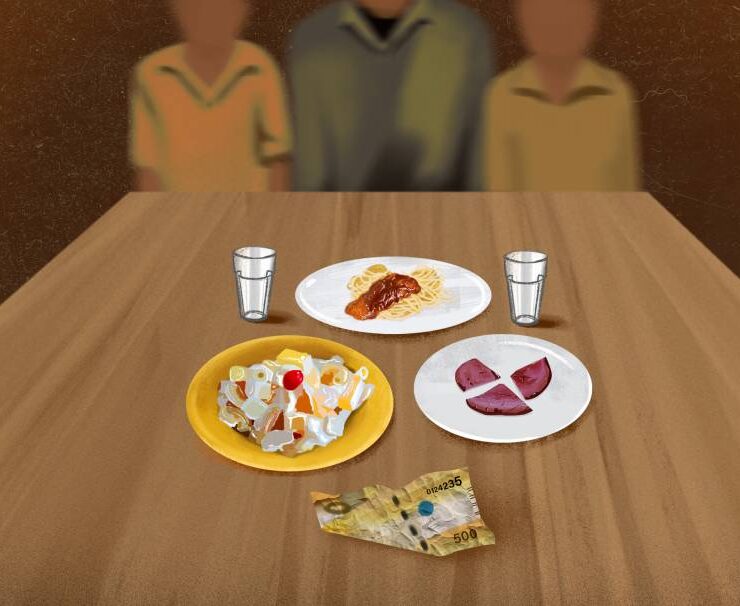Dissecting the much-hyped local theater boom

In the past two years, we’ve been seeing social media posts of various theater groups boasting of sold out shows and re-runs; a plethora of posts from happy theater audience members taking selfies with the actors or standing in front of the stage with the set design as the backdrop; and a few social media posts declaring that the local theater scene is more than just alive—it’s booming.
But I had to run my theories with my friends in theater to see if my observations run true with people on the inside. I sent several questions to a host of theater practitioners—actors, directors, company managers, and even critics—and from those who were able to reply, I was able to glean some really interesting insights.
(I would like to note that this conversation is primarily related to local theater as it applies to Metro Manila only. A larger, more holistic discussion on Philippine theater that includes theater in the regions should be equally explored.)
Before and after the pandemic
My initial suspicion was that the pandemic had started this shift for many audiences. After being stuck at home and finding their entertainment via streaming platforms, Filipinos wanted something more than what they got from watching a screen all day. This is my first thought as to why the pandemic was instrumental to this sudden shift towards theater.
Melvin Lee, president of the Philippine Educational Theater Association (PETA), agrees that there was a “phase after the pandemic where there was ‘revenge theater.’”
“Na-confine ‘yong tao, nasa gadget lang nanonood. They wanted something visceral. They wanted something more immersive, more interactive, more in your face, and [a] moment-to-moment kind of experience.” Lee says, adding that compared to other art forms like film, theater’s “ephemeral quality” is what sets it apart.
If you’re not there, you will miss it, and not all shows are the same. Because of the nature of the art form, every performance is something different and new. As for film, if you miss it, it’s fine because you know it will end up on a streaming platform eventually.
Revenge theater
But there’s a significant detail that I’ve missed in my observation and this was pointed out by Frida Tan, theater news reporter and over-all managing director for Theater Fans Manila (TFM), actress Mikkie Bradshaw-Volante, and Pat Valera, playwright, director, and co-founder of Barefoot Theater Collaborative—and this was the impact that the production of “Ang Huling El Bimbo” had to the theater industry.
All three talked about how the popularity of the music of the Eraserheads—coupled with the largeness of the show—was able to bring in a new audience into the theater-going experience. But then, during the pandemic, “Ang Huling El Bimbo” released the proshot footage online for free and, according to Tan, the show streamed and hit “7 million views in a mere 48 hours.”
For her and for Bradshaw-Volante, people who were unfamiliar with theater were surprised at how good Philippine theater can be.
Tan shares, “After the pandemic, all these audiences from across all these spectrums started to flock to the theaters. I remember during the stagedoors of ‘Mula sa Buwan’ in 2022, where the actors would say that they felt like rockstars, with everyone queuing at the theater lobby just to get a signature and/or a photo with the cast.”
She adds how people would fly to Metro Manila, “booking flights and accommodations just to watch theater,” even overhearing a conversation between two people who “travelled from South Cotabato to marathon ‘Dedma,’ which was showing at the Mirror Theatre Studio, and ‘Anino sa Likod ng Buwan,’ which was showing at the PETA Theater Center, in one day, only to fly back to their homes the next day.”
“We also get questions from tourists over at TFM who are planning their trips to the city to catch shows. We weren’t getting questions like that pre-pandemic,” Tan says.
A new breed of theater-goers
Bradshaw-Volante agrees that the “Ang Huling El Bimbo” proshot and all the other “slime tutorials”—a term used to call bootlegs of theatrical shows—that were rampant during the pandemic allowed Filipinos to see what theater was about and gave birth to “this brand new audience of theater-goers who were young and passionate and hungry for more—so different from the audiences we knew pre-pandemic.”
“On top of that, this new audience had a particular interest in original Filipino productions,” Bradshaw-Volante adds.
But Valera is quick to point out that while the pandemic did see the sudden surge of interest and bankability of theater, this was already predicated as far back as 2010. After all, certain shows had already piqued the interest of local audiences. Shows like “Sa Wakas” and “Rak of Aegis” shifted the theater-going audience from an upper-class and elite demographic to the middle class—and that laid the groundwork for what we are seeing today.
What really created the shift, according to Valera, was seeing all the original Filipino musicals—not just jukebox musicals but those with original songs, bringing musical theater to the broad audience.
The theater-going demographic didn’t just grow; it changed and grew wider.
So, is theater really booming?
For Bradshaw-Volante, she feels that while “people are making money,” we still “haven’t reached the full potential of the local theater scene.” She even admits that, despite being on hit shows back-to-back, she still cannot focus entirely on just theater and needs to supplement her income with other projects.
Nelsito Gomez, a director, actor, playwright, and artistic director of the Company of Actors in Streamlined Theatre (CAST), would really like to define the terms for “booming.” He says, “If it means consistent output of content, then sure, it’s booming. There’s hardly a weekend when something theatrical isn’t happening in Manila. But if we define ‘booming’ as all shows are in the black (solvent), I think the spreadsheets will disagree.”
Tan agrees, saying that some shows have been runaway successes like “Into the Woods” and “One More Chance,” which sold out their shows before they even opened. “[But] other shows have not had the same box office success,” she continues. “Tickets are just too expensive now, and the number of shows has sometimes proven to be too overwhelming. That is when marketing, word-of-mouth, and reviews come into play.”
Lee adds, “Generally, theater is booming. Hindi lahat ‘yon ay box office hit. Just because it did a re-run, it doesn’t mean that it did well at the box office. Sometimes, when they do a re-run, it’s just to break even or so that they can finally make a profit with those extra shows.”
Even for a smaller company like CAST, filling a hundred-seater venue doesn’t make it easier. “The problem is that all theater companies are eating from the same small slice of pie. The real challenge—the one we still haven’t solved—is how to bake a bigger pie,” shares Gomez.
Moving forward
According to Lee, this “boom” shows that theater is viable and can be profitable. Plus, it’s giving consistent work to a lot of theater practitioners—not just actors, but stage managers, choreographers, set designers, and so forth.
And the increased visibility is penetrating the general public’s awareness, thus creating more audiences for all these theater shows.
For the future of theater to be sustainable in this growth, Tan thinks government support would be needed to help lower the ticket cost of shows, which would then continue to improve the sales.
“It’s more expensive to watch theater here on average than, say, Australia or the U.K. because they have so much support,” she shares. “That is the dream for Philippine theater—for it to be sustainable for the producers and the artists making the art, and for it to be affordable to audiences from all economic sectors.”
For Valera, the theater industry is not yet an industry. He says, “It has the potential to be one, but we are all doing it on our own strategies. Sponsorships, if you’re lucky, make up five to 10 percent. There is no national support.”
This is why he believes that the future of Philippine theater involves developing the audience. He says that we need “to know our audience, sustain our audience, [and find] novel ways to promote theater.”





















